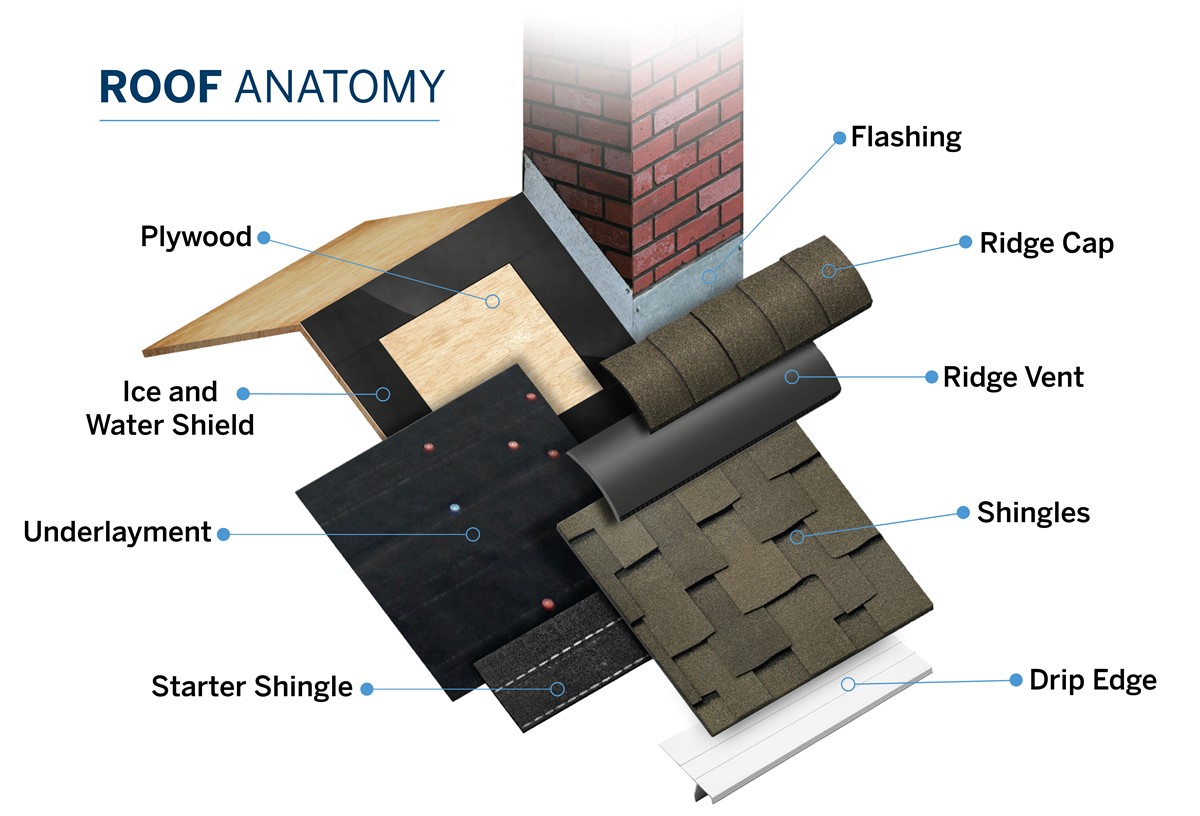
A residential roof is more than shingles. There are numerous parts of a residential roof system. This article will cover what they are and what they do. Each has a specific role in helping keep your home dry and safe. They all need to work in unison to be effective.
What Parts Make Up the Anatomy of a Roof?
Shingles are a part of your roof. They can help enhance the curb appeal of your home. Your residential roof system lets air circulate, routes water away, and keeps you safe.
Your Gutters Move Water Away
Gutters are an integral part of keeping your home dry. Water being too close to the foundation can lead to a leaky basement or foundation damage. Having an often cleaned, well-maintained gutter system will prevent these issues from happening.
Gutters
Directing water off of your roof and away from your home via the downspouts is the purpose of gutters. The gutters are open-top metal channels. Because they are open-top, the gutters can fill with leaves and debris. It is necessary to clean them throughout the year. Feazel recommends cleaning the gutters in the spring and fall. They may need cleaned often more than that depending on the number of trees outside your home. It may be worth considering a gutter guard system to prevent blockage.
Downspouts
Downspouts guide water down from your gutters and either onto the ground or underground with a system. Water has to move away from your home to keep your foundation in good shape. Additionally, downspouts help prevent leaks from occurring in your basement.
What are Roof Shingles?
Roof shingles are a tested, sturdy, and efficient way to protect your residential roof. Shingles are composed of a basemat, asphalt on the top and bottom, and a layer of granules on the top. Ground stones and minerals make up the granules. The granules provide your roof with an extra layer of protection.
First, the granules help with residential roof installation by giving a grippy surface for your roofer to walk on. Also, the granules prevent the shingles from sticking together inside the packaging.
Second, adding granules to a shingle increases its durability. You do not want to replace your roof every couple of years. The granules take the beating, so the asphalt doesn't quickly wear down.
Third, the granules help shield your shingles from ultraviolet rays.
Lastly, shingle granules can come in a variety of colors which can raise the curbside appeal of your new roof.
Why Do I Need a Starter Strip on my Residential Roof?
When it comes to residential roof installation, all shingles start with the starter strip. It has numerous functions that benefit your home.
First, the construction of a starter strip prevents driving rain from getting under your shingles. Second, the next layer of shingles aligns with starter strips because starters form a straight line.
Ice and Water Shield (aka Leak Barrier) Keeps the Water Out
An ice and water shield is placed on your roof on the most susceptible leak points. The purpose of a leak barrier is to prevent your roof deck from getting wet, and it can also help prevent the formation of ice dams. The leak barrier is placed in the valleys of your roof, around your chimney, and the rakes.
What is Roof Underlayment, and Does My Residential Roof Need It?
Roof underlayment comes in several different materials;
- asphalt-saturated felt
- rubberized asphalt
- non-bitumen synthetic underlayment
The purpose is to prevent your roof deck from getting wet. It lies between the shingles and decking. You cannot see underlayment after the installation of your new roof is complete.
Keeping You Dry; The Importance of Drip Edge on your Residential Roof
The drip edge is flashing which helps whisk water away from your fascia. Moisture that gets behind your fascia can lead to mold or rot and in severe cases, early failure of your roof system.
Drip edge is a small but mighty component of your roof system. It works seamlessly to help direct water to the gutters and prevents your eaves from getting water inside.
Roof Decking Forms The Foundation of Your Roof.
The roof decking is the base layer of your roof. Decking is made from plywood and acts as a foundational component of your roof. It will need replacing if there is any rot or moisture damage.
Your roofer will inspect the damage to the decking during a tear-off. The decking should be in good condition since shingles get nailed directly to it.
Flashing Directs Water Away From Critical Areas of Your Roof
Flashing is typically a strip of galvanized metal that roofers use to direct water away from parts of your roof. You will find flashing where your roof meets a vertical plane, such as your chimney or dormers.
Roof Valleys Can be a Weak Point for Roof Leaks if Not Installed Correctly.
Your roof valley is where two slopes meet. Installing a proper leak guard in your valleys will help prevent it from springing a leak during periods of rain. The valleys of your roof will see a significant amount of moisture over time. It is critical to protect them from leaks.
Venting a Residential Roof
Air movement from outside and through your roof system allows your home to breathe.
Proper ventilation allows your home to push out the hot and humid air in your attic and allow cooler air to flow through. Prolonged inadequate ventilation can lead to mold, mildew, rot, and early roof failure.
Natural Gas and Plumbing Ventilation
Some utilities will need to vent out of your roof. These include natural gas and plumbing vent pipes. Neither of these has to do with allowing your home to breathe.
Roof Venting Comes in Various Shapes and Sizes
There are several roof vents on the market today. It is unlikely that your roof will utilize each of these types of ventilation. However, you may find that your home has several of these in its roof system.
Ridge Vent
You will find ridge vents at the peak of your roof. They run the length of your roofline and contain numerous vents to let hot/ humid air out. Ridge vents pair well with soffits. Your soffits allow cool air to flow in, and hot air will discharge out of your ridge vent.
Ridge Caps
Ridge caps are a type of shingle that goes over the top of your ridge vent. The ridge cap is thicker than standard shingles, which helps protect your home from harsh wind damage.
Turtle vents, gable vents, turbine vents, and more
There are several other types of vents that tie into your roofing system.
- Turtle vents mount on your roof. They are typically not the only vent in a system. You can add turtle vents to provide extra ventilation instead.
- You will find gable vents on each end of a gable roof. Air will flow in one side of the gable and out of the other. Gable vents pair well with a soffit to keep your home breathing.
- Turbine vents spin with the wind. As the wind blows, the air pulls out of your attic by the turbine.
What Are The Eaves in My Home?
Take a step outside and look up. The eaves will likely be above you. The eaves of your home hold your soffits. Your gutters are attached to the fascia, which makes up the far end of the eaves. Fascia is the gutter support system and supports the starter shingle.
Contact Your Local Feazel Office Today For An Inspection
Feazel has installed residential roofs for over 30 years in Columbus, Cincinnati, Cleveland, Dayton, Indianapolis, and Raleigh. Feazel won the 2021 Residential Roofing Contractor of the Year. Schedule a free consultation with our team of experts today.
Tags
Subscribe to Feazel's Blog

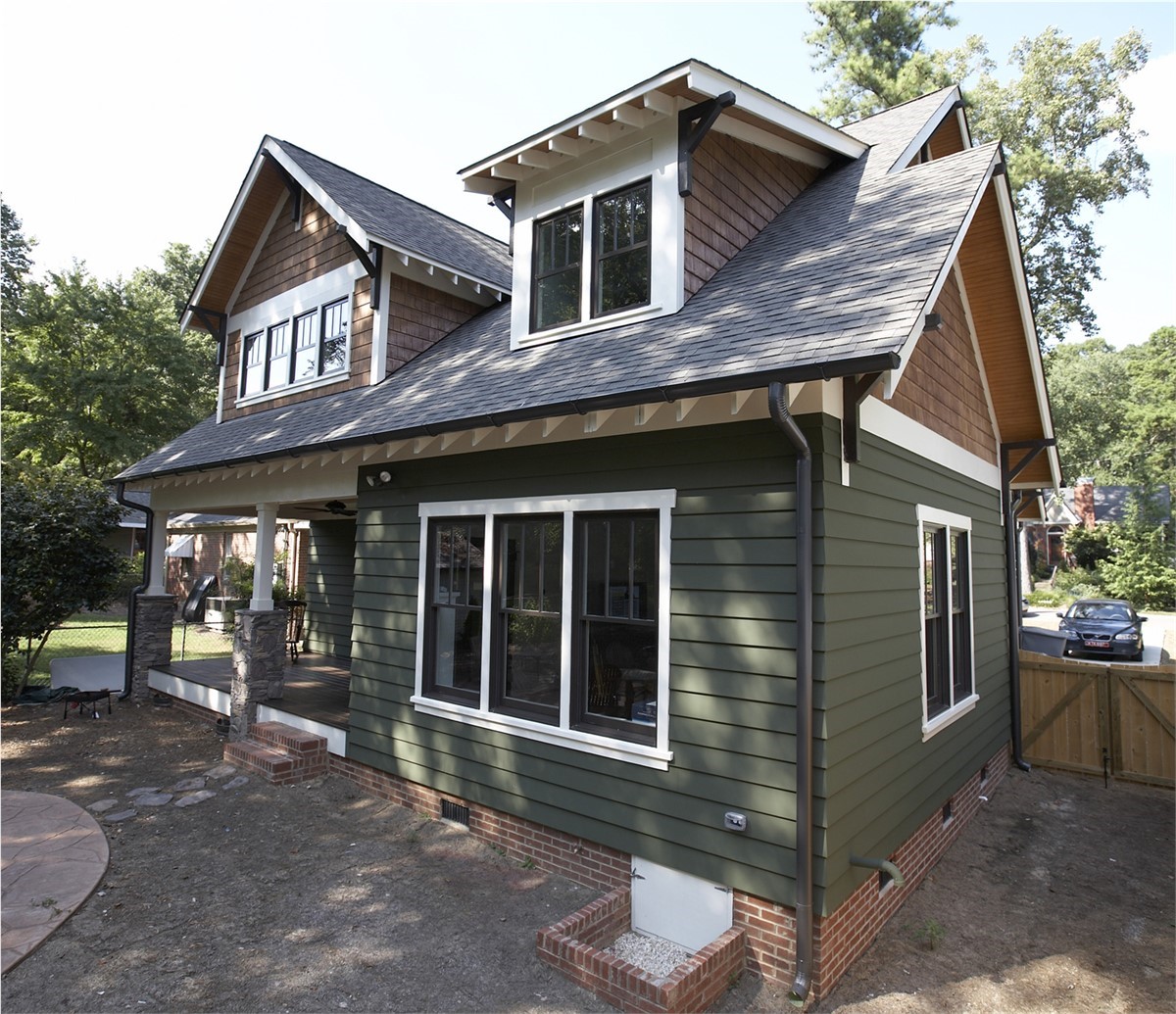
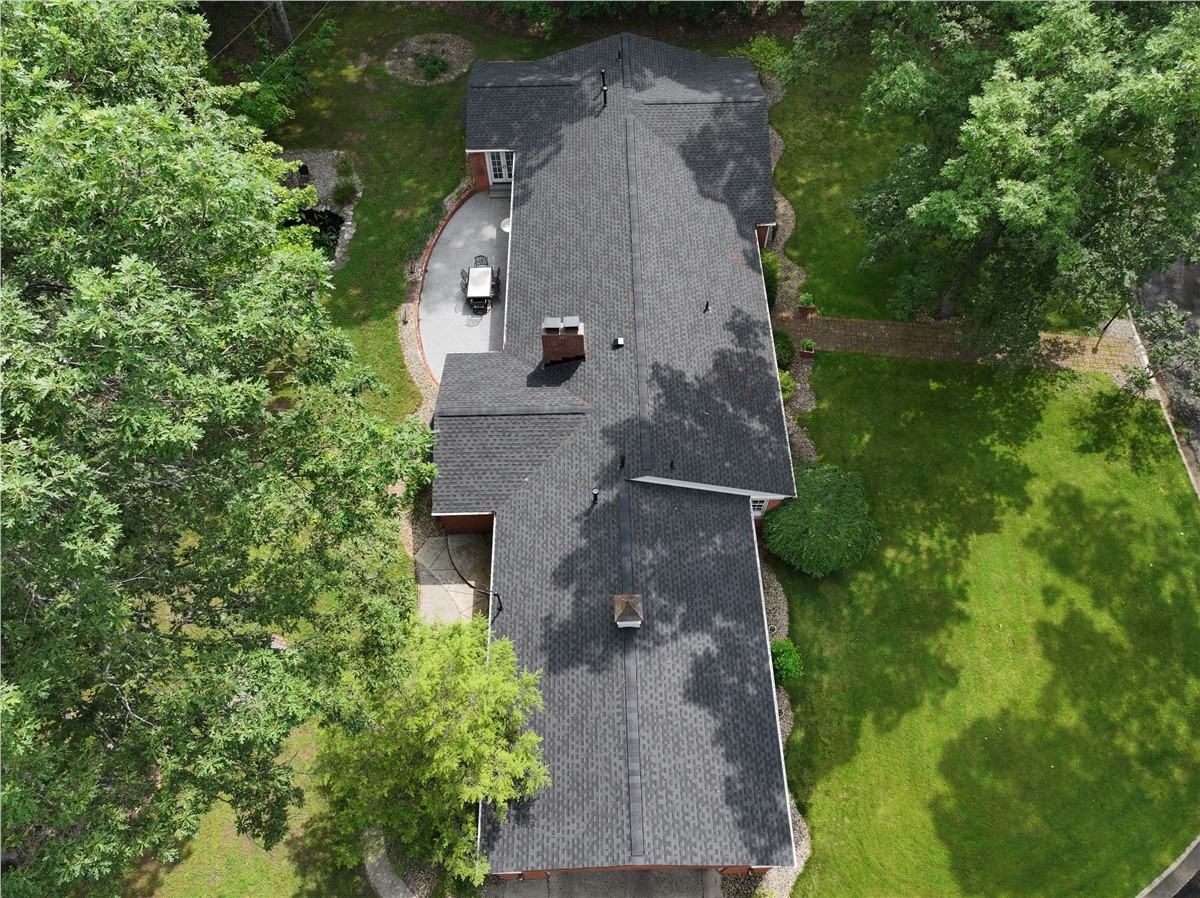
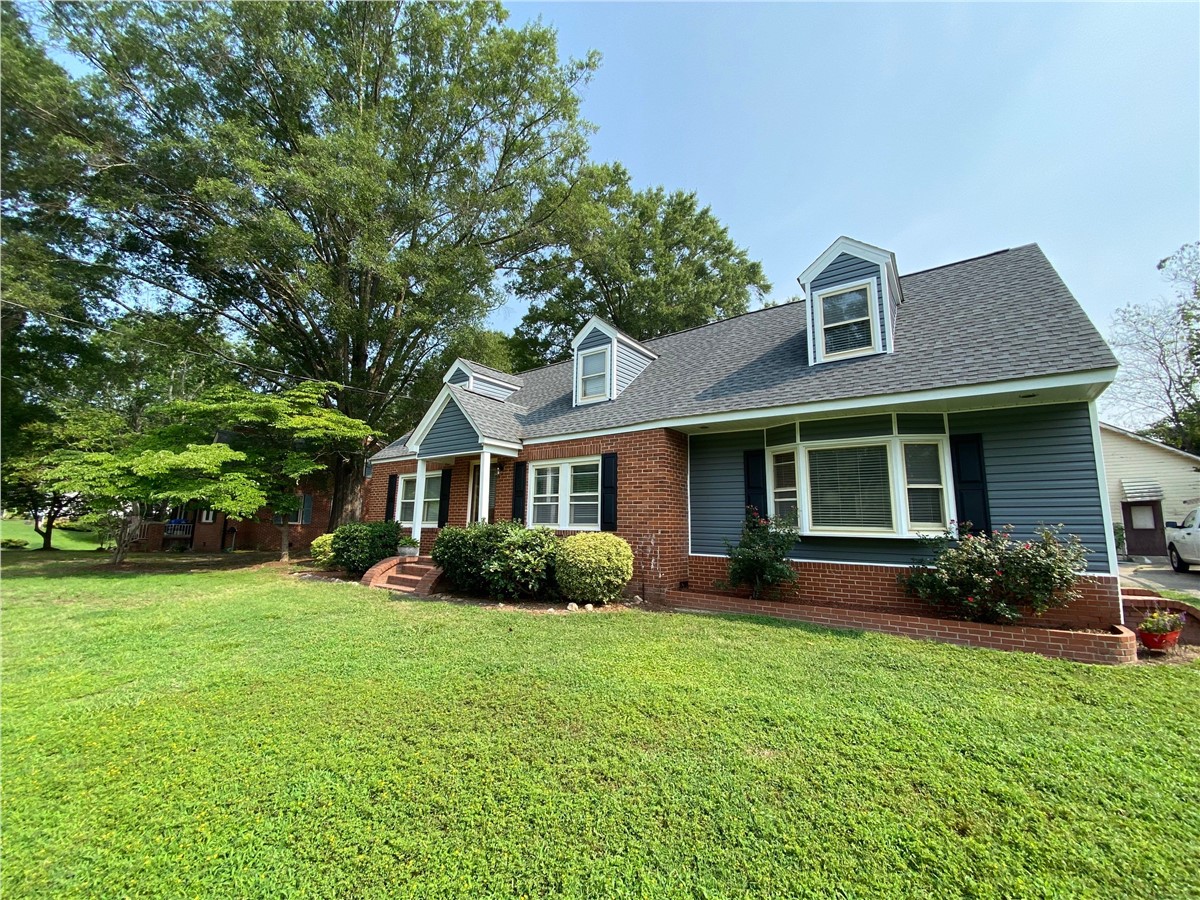
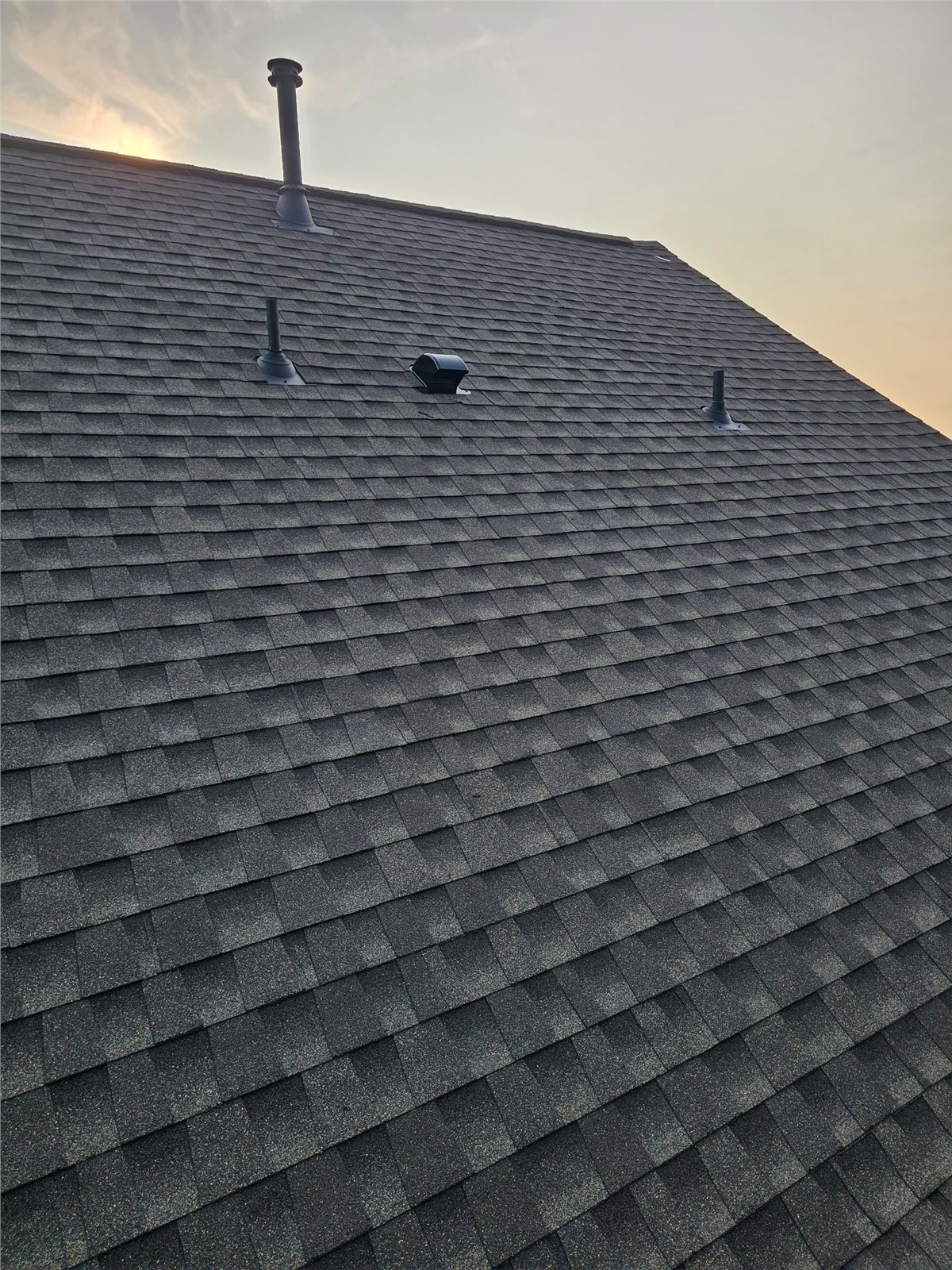
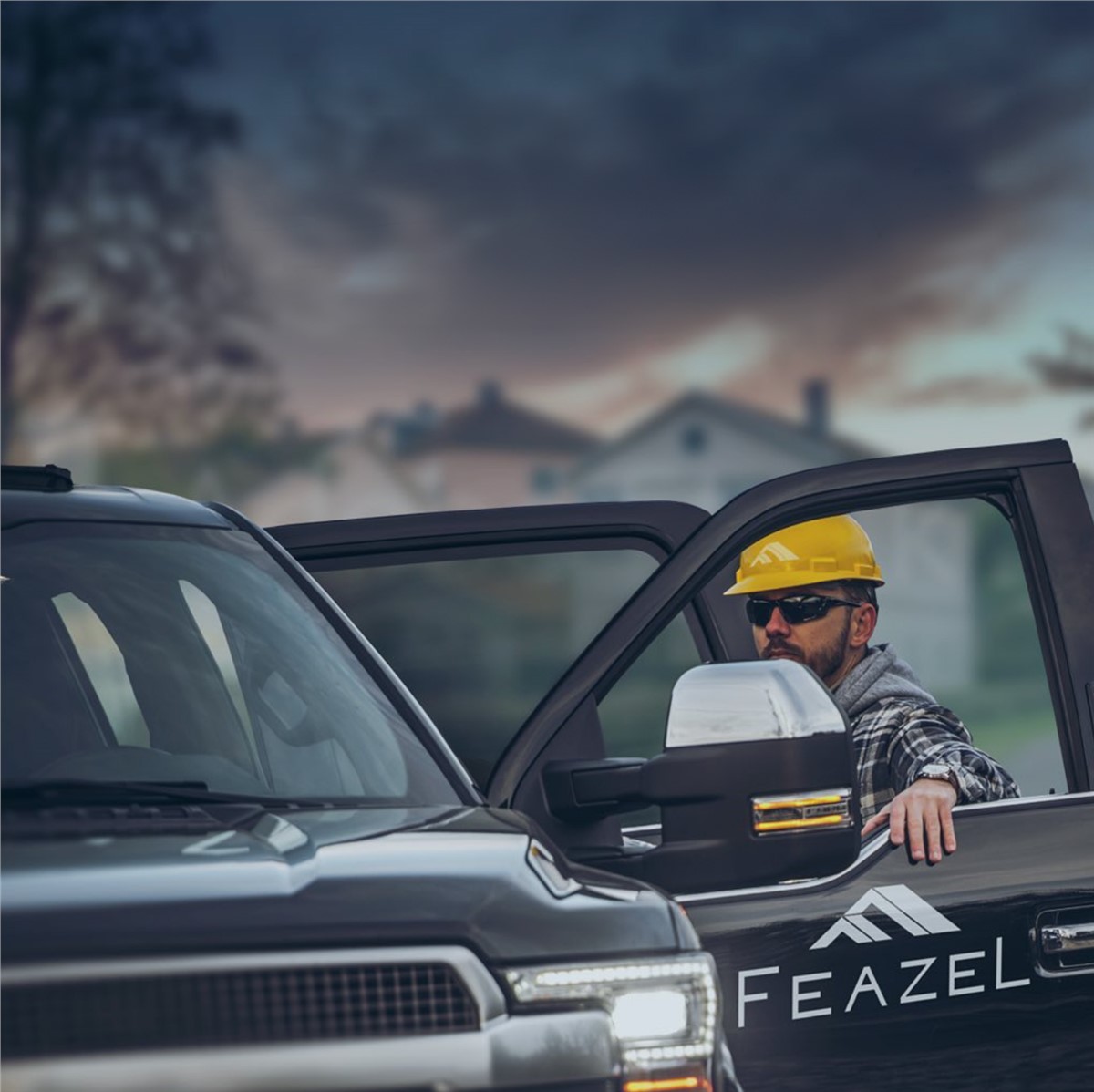
Comments